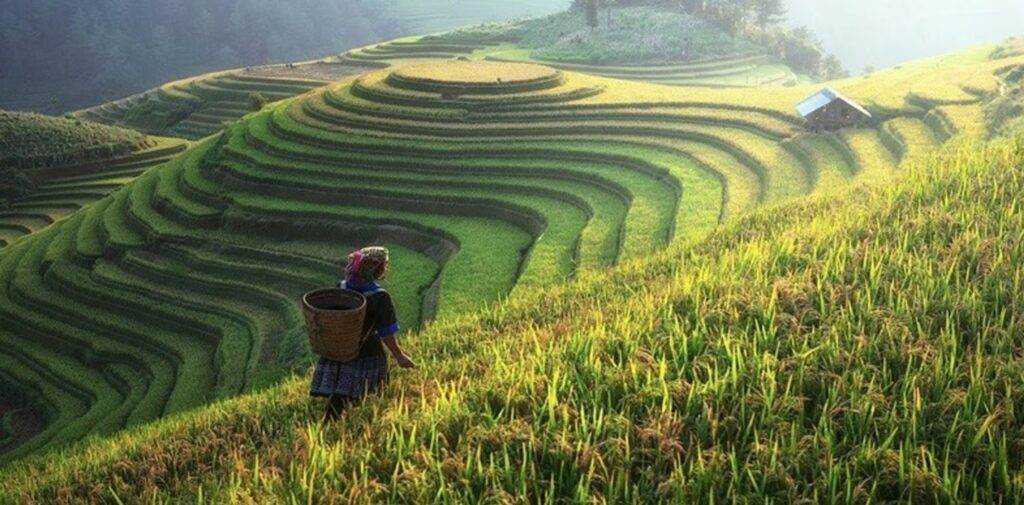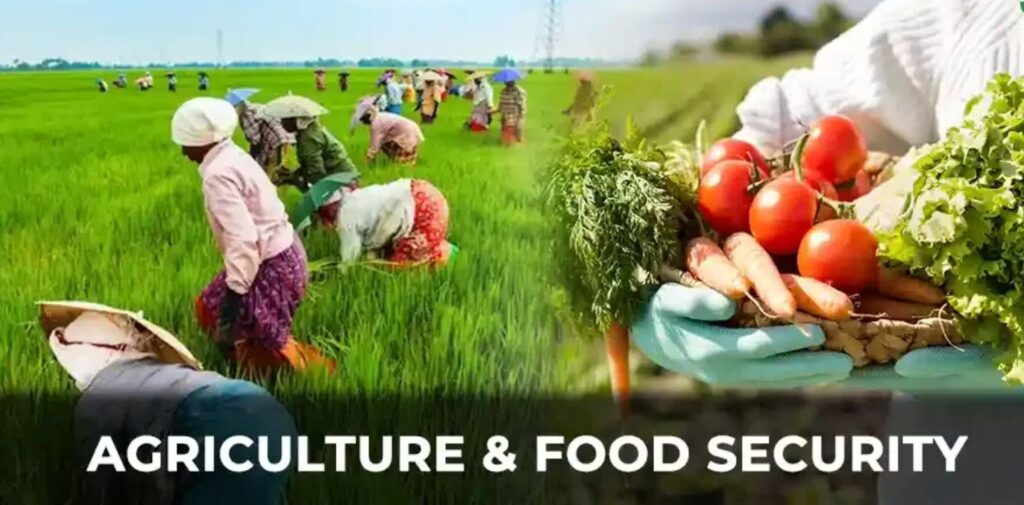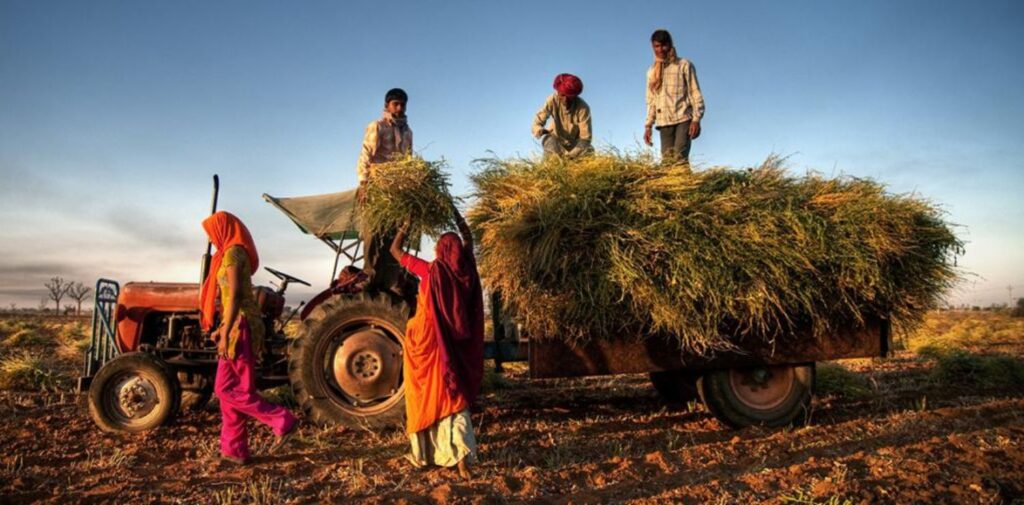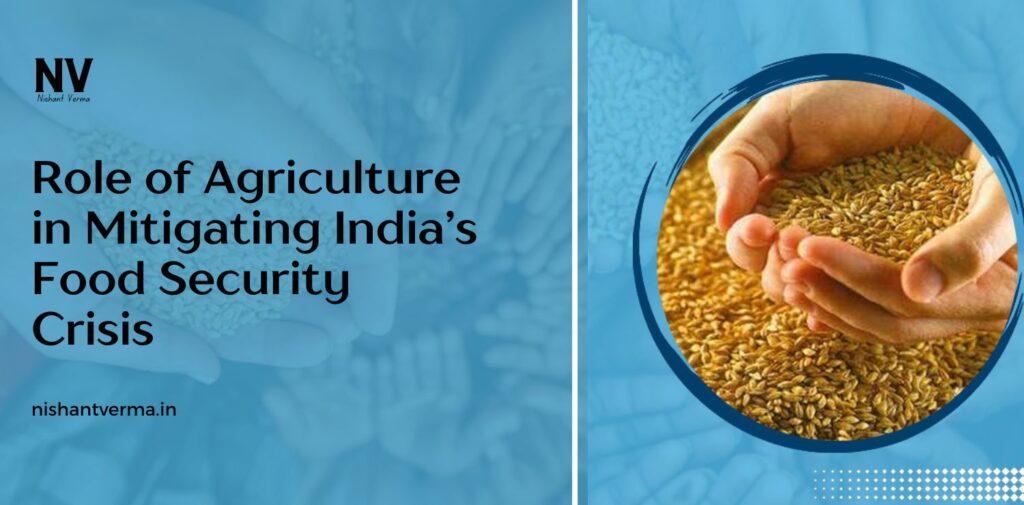India, a country with a population of over 1.4 billion people, faces significant challenges when it comes to food security. Food security means that all people, at all times, have access to enough nutritious food to lead an active and healthy life. Despite being one of the world’s largest producers of food, India struggles with food security issues due to factors such as poverty, climate change, inadequate infrastructure, and unequal distribution. Agriculture, being the backbone of India’s economy, plays a crucial role in addressing these issues and improving the country’s food security.
In this article, we will explore how agriculture can contribute to mitigating India food security crisis and what steps can be taken to ensure that food is available, accessible, and nutritious for everyone.
Importance of Agriculture in India
Agriculture is the primary source of livelihood for nearly half of India’s population. It contributes to the country’s economy, provides food for millions, and supports rural employment. More than 60% of India’s population depends on agriculture for their livelihood. This makes agriculture one of the most critical sectors in ensuring food security.
India produces a variety of food items, including rice, wheat, pulses, fruits, vegetables, and dairy products. However, the challenge lies not in producing enough food but in ensuring that this food reaches those who need it most, particularly the poor and vulnerable groups living in rural areas. The role of agriculture, therefore, extends beyond just growing food; it involves improving the productivity, accessibility, and sustainability of food production systems.

Challenges to Food Security in India
Before we look at how agriculture can mitigate the food security crisis, it’s essential to understand the key challenges India faces in achieving food security:
- Unequal Distribution: While India produces enough food to feed its population, the distribution of food is uneven. Many rural areas, especially those in remote regions, lack proper infrastructure for storing, transporting, and distributing food. This leads to wastage, and people in these areas often go hungry despite the availability of food.
- Poverty: A large section of India’s population lives below the poverty line, making it difficult for them to afford nutritious food. Poverty, combined with rising food prices, limits access to sufficient and healthy food.
- Climate Change: Agriculture in India is highly dependent on the monsoon season, which is becoming increasingly unpredictable due to climate change. Unseasonal rains, droughts, and floods have led to crop failures and decreased agricultural productivity, threatening food security.
- Inadequate Infrastructure: India’s rural areas often lack proper storage facilities, transportation networks, and markets, leading to food losses after harvest. About 30-40% of food produced in India gets wasted due to poor infrastructure.
- Agricultural Sustainability: The increasing use of chemical fertilizers, pesticides, and unsustainable farming practices is degrading soil quality and reducing agricultural productivity in the long term. This puts pressure on farmers and further threatens food security.
How Agriculture Can Help Address Food Security
Despite these challenges, agriculture remains central to addressing India food security crisis. Let’s explore how improvements in agricultural practices can help mitigate food insecurity:
Increasing Agricultural Productivity
Improving agricultural productivity is essential to ensuring that there is enough food to feed India’s growing population. This can be achieved by adopting modern farming techniques, using high-yielding varieties of crops, and improving irrigation practices.
For example, the use of hybrid seeds and genetically modified crops can lead to higher yields and more resilient crops. Additionally, precision farming, which involves the use of technology to monitor and optimize crop growth, can improve productivity while minimizing the use of water, fertilizers, and pesticides.
Diversifying Crops
India’s agriculture has traditionally been focused on a few staple crops such as rice and wheat. While these crops are essential for food security, diversifying crop production is critical to addressing nutritional deficiencies and improving food security.
Growing a variety of crops such as pulses, fruits, vegetables, and oilseeds can ensure a balanced diet for the population. Pulses, for instance, are an excellent source of protein and are a staple in many Indian diets. Diversifying crops also makes agriculture more resilient to climate change, as different crops are affected by weather patterns in different ways.

Sustainable Farming Practices
Sustainable farming is crucial for long-term food security. Over-reliance on chemical fertilizers, pesticides, and water-intensive crops is not only harmful to the environment but also reduces the future productivity of agriculture. To address this, farmers should be encouraged to adopt organic farming practices, agroforestry, and integrated pest management.
Agroecological practices, which focus on using local resources and knowledge, can help improve soil health, conserve water, and increase biodiversity. These methods promote the sustainability of farming while ensuring that the land continues to produce food for future generations.
Improving Irrigation Systems
In a country like India, where agriculture is largely dependent on monsoons, improving irrigation systems is key to mitigating the impacts of climate change and ensuring consistent food production. Investing in efficient irrigation technologies, such as drip irrigation and sprinklers, can help conserve water and improve crop yields.
Additionally, building more water storage facilities, rainwater harvesting systems, and water conservation practices can help manage water resources more effectively, ensuring that farmers have access to water during dry spells and droughts.
Strengthening Food Storage and Distribution Systems
One of the major reasons for food insecurity in India is the lack of proper storage and distribution systems. After harvest, a significant portion of food is wasted due to poor storage facilities and inadequate transportation infrastructure. To address this, the government and private sector must invest in modern cold storage facilities, better roads, and efficient supply chains.
For example, cold storage can help preserve perishable food items like fruits, vegetables, and dairy products, reducing food wastage and improving availability. Improved transportation and logistics can also ensure that food reaches remote areas quickly and safely, reducing food shortages in these regions.
Promoting Farmer Support Systems
Farmers are at the heart of India’s agricultural system, and ensuring their well-being is crucial to food security. Providing farmers with access to credit, insurance, and market information can help improve their productivity and income. Agricultural extension services can offer farmers training on modern farming techniques, sustainable practices, and efficient use of resources.
Additionally, promoting farmer cooperatives can help farmers pool resources, gain better access to markets, and negotiate fair prices for their produce. Providing farmers with the tools and knowledge they need will empower them to grow more food, increase their income, and contribute to food security.

Government Initiatives and Policies
The government plays a vital role in supporting agriculture and food security. Several policies and schemes, such as the National Food Security Act (NFSA), Pradhan Mantri Fasal Bima Yojana (PMFBY), and the Pradhan Mantri Kisan Samman Nidhi (PM-KISAN), have been implemented to support farmers, improve food distribution, and reduce hunger.
The government’s public distribution system (PDS) ensures that essential food items like rice, wheat, and sugar are provided at subsidized rates to vulnerable populations. Moreover, initiatives like the National Mission on Sustainable Agriculture (NMSA) and the Soil Health Management Program aim to improve agricultural productivity while promoting sustainable practices.
Conclusion: India Food Security Crisis
Agriculture is at the core of India’s efforts to address its food security crisis. By focusing on increasing productivity, diversifying crops, promoting sustainable farming practices, improving irrigation, and strengthening food storage and distribution systems, India can ensure that all its citizens have access to sufficient, nutritious food.
However, achieving food security requires a comprehensive approach that involves government support, technological innovation, and active participation from farmers and other stakeholders. Agriculture alone cannot solve the problem of food insecurity, but it is certainly the foundation upon which India can build a more secure and sustainable food system for the future. By tackling the challenges head-on and investing in the right solutions, India can move closer to achieving food security for all.




